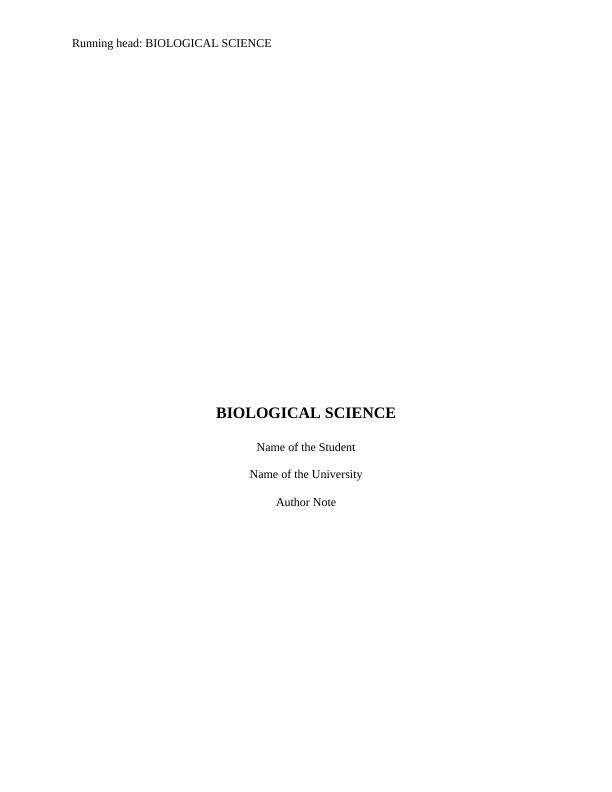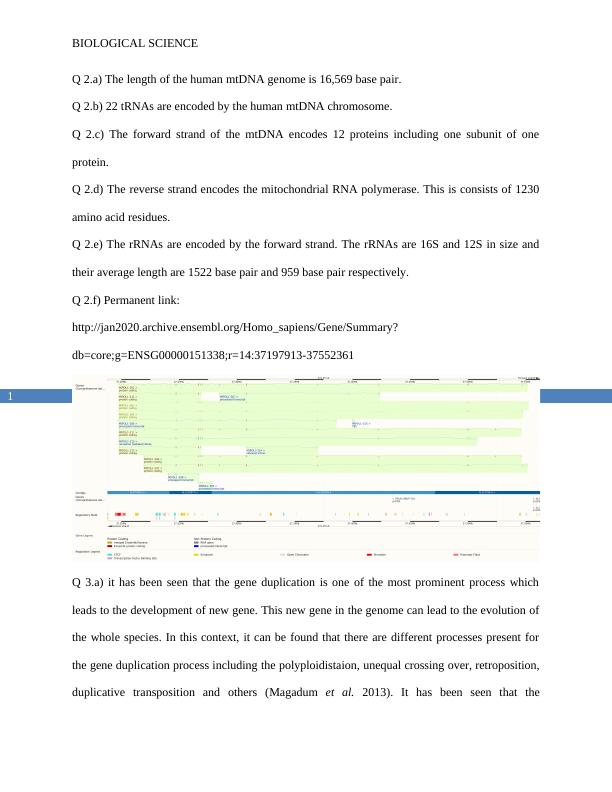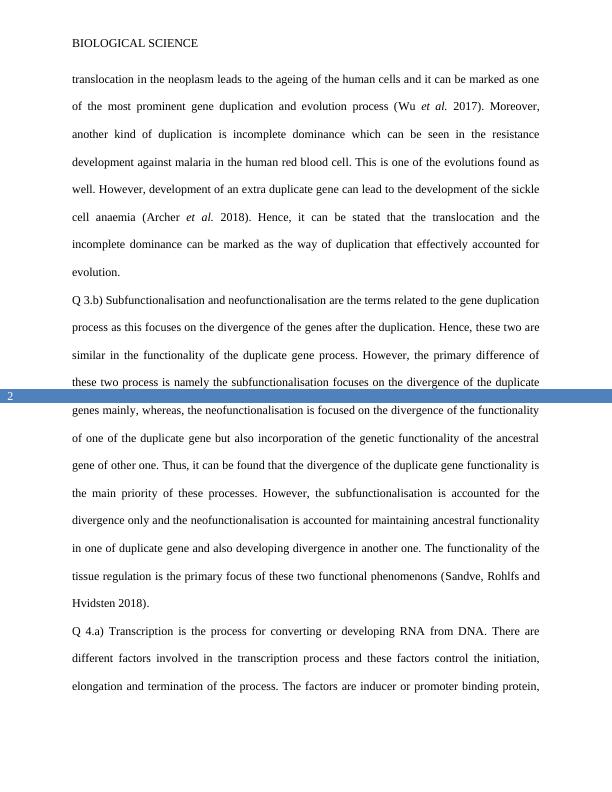Biological Science: mtDNA, Gene Duplication, Transcription and Splicing, Transcriptional Accuracy, BACE1 Expression
Added on 2022-08-10
9 Pages2503 Words400 Views
End of preview
Want to access all the pages? Upload your documents or become a member.
Biological Science: Definitions, Comparisons, Short Answers, Multiple Choices
|13
|1596
|93
Genetic Change: Mutation and Biotechnology
|9
|2272
|1
Transcription & Translation; the Effect of Mutations in Biological Sciences
|6
|1938
|53
Protein Synthesis and Nucleic Acids in Human Genetics
|9
|2234
|96
Assignment On The Mutation | DNA
|6
|2167
|252
The Significance of SUMOylation as a Potential Therapeutic Target for Cancer
|11
|2455
|176



